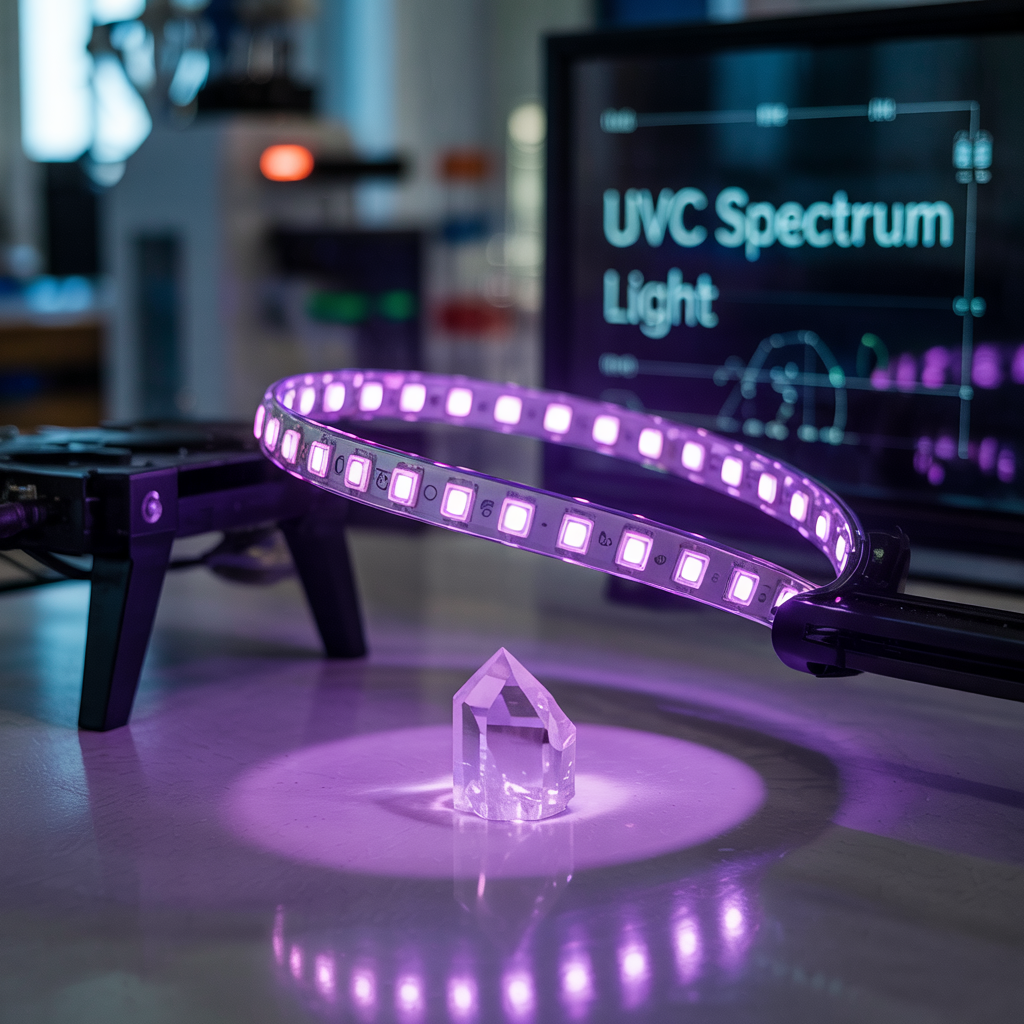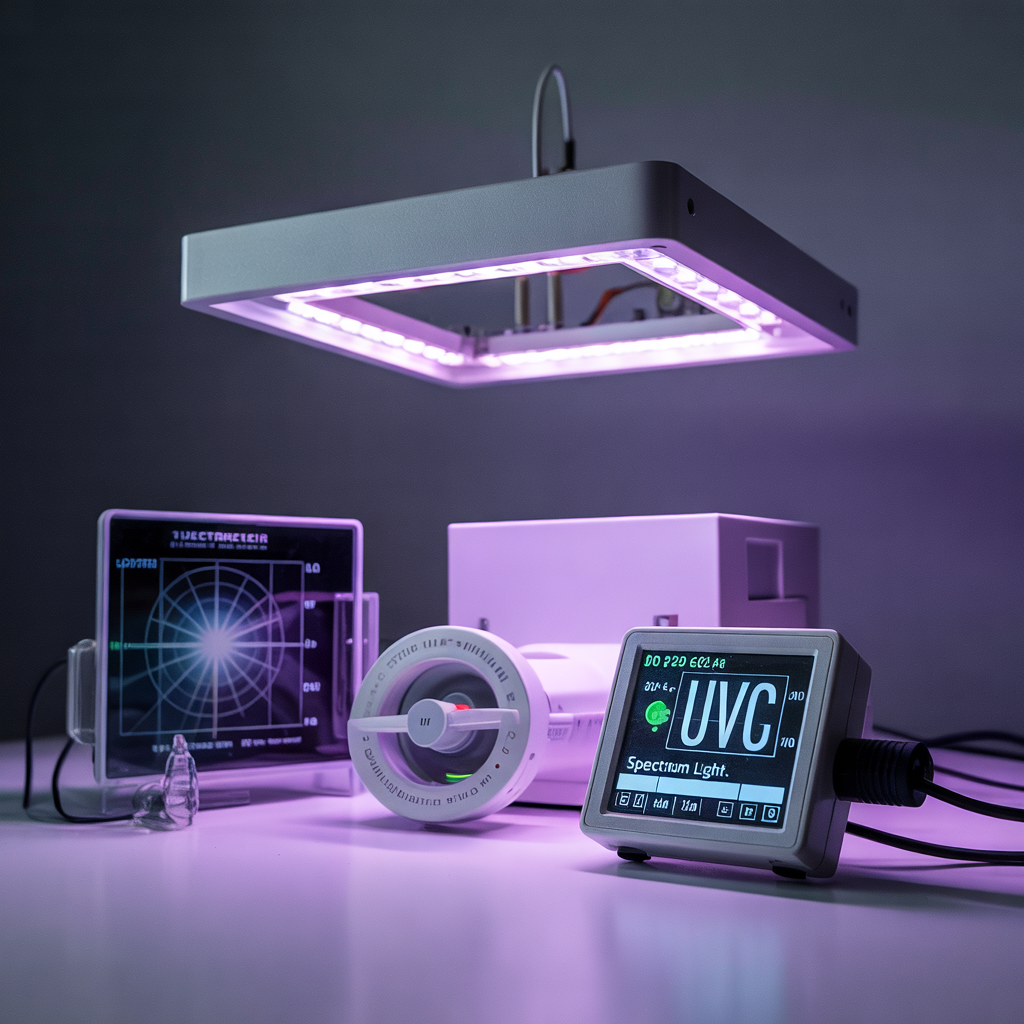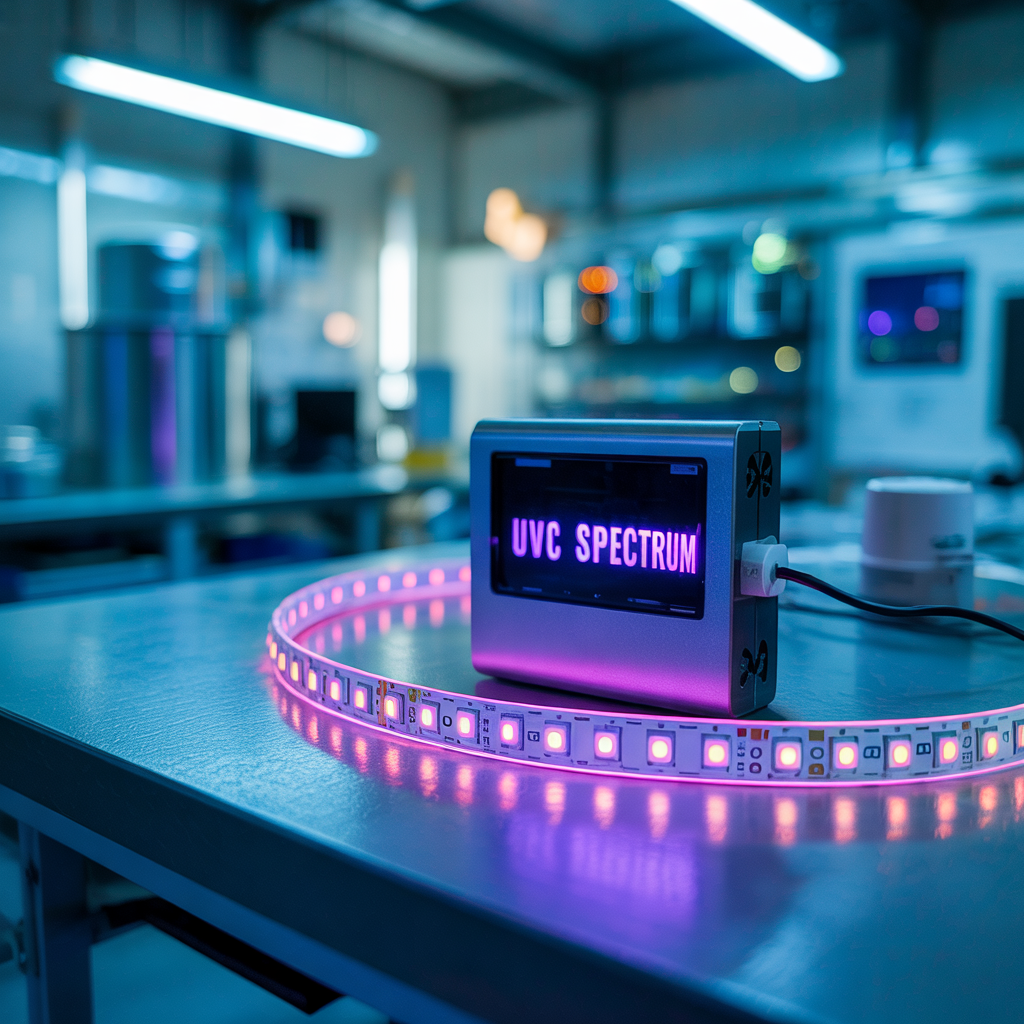Can LEDs Emit UVC Spectrum Light? Understanding UVC LEDs And Their Applications
Can LEDs emit UVC spectrum light? Yes, LEDs can emit UVC spectrum light, but only specially designed UVC LEDs do so. Standard LEDs do not emit UVC. UVC LEDs operate in the 200–280 nm range and are used for sterilization and disinfection purposes. They are more expensive and less efficient than visible light LEDs. The…
Can LEDs emit UVC spectrum light? Yes, LEDs can emit UVC spectrum light, but only specially designed UVC LEDs do so. Standard LEDs do not emit UVC. UVC LEDs operate in the 200–280 nm range and are used for sterilization and disinfection purposes. They are more expensive and less efficient than visible light LEDs.
The electromagnetic spectrum encompasses all types of electromagnetic radiation, arranged according to their wavelengths and frequencies. This spectrum includes radio waves, microwaves, infrared radiation, visible light, ultraviolet (UV) radiation, X-rays, and gamma rays. Each type of radiation has different properties and applications.
Ultraviolet radiation is a portion of the electromagnetic spectrum with shorter wavelengths than visible light. It’s further divided into three subcategories: UVA, UVB, and UVC. UVC radiation, the focus of our discussion, has the shortest wavelength and highest energy within the UV range.
Can LEDs Emit UVC Spectrum Light?
LEDs can emit UVC spectrum light, but only if they are specifically engineered for that purpose. UVC LEDs produce ultraviolet light in the 200–280 nanometer range, which is effective for germicidal and sterilization applications. Regular LEDs do not emit UVC light and are designed for visible light output only.
What is UVC Light?

UVC Wavelength and Properties
UVC light has wavelengths ranging from 100 to 280 nanometers (nm). This high energy makes it capable of disrupting the DNA of microorganisms, leading to their inactivation or destruction. This germicidal property is the basis for many of its applications.
Read More: Troubleshooting Flickering LED Lights: Why Are My LED Lights Flashing?
Germicidal Effects of UVC
The germicidal effect of UVC light stems from its ability to damage the DNA and RNA of bacteria, viruses, and other microorganisms. This damage prevents them from replicating and effectively eliminates their viability. This is crucial in disinfection and sterilization processes.
Can LEDs Emit UVC Light?

The Challenge of UVC LED Production
Producing LEDs that efficiently emit UVC light has been a significant technological challenge. Traditional LED materials struggle to generate UVC wavelengths effectively. However, advancements in materials science and manufacturing techniques have overcome many initial obstacles.
Materials Used in UVC LEDs
UVC LEDs typically utilize materials like aluminum gallium nitride (AlGaN) to generate the required UVC light. These materials are carefully engineered to create the necessary bandgap energy for UVC emission. The precise composition and doping of these materials are critical for efficient UVC production.
Read More: 15 Foyer Lighting Ideas High Ceilings: Captivating Designs
Advantages of UVC LEDs
Energy Efficiency
Compared to traditional UVC sources like mercury vapor lamps, UVC LEDs offer significantly higher energy efficiency. This translates to lower operational costs and reduced environmental impact. They are also much more compact and don’t require large, bulky power supplies.
Compact Size and Design Flexibility
The small size and lightweight nature of UVC LEDs allow for their integration into various devices and applications. Their flexibility in design opens opportunities for customized solutions in different environments.
Longer Lifespan
UVC LEDs generally have a much longer operational lifespan compared to traditional UVC lamps, reducing the frequency of replacements and maintenance costs. This contributes to overall cost savings and reduced waste.
Limitations of UVC LEDs

Lower Output Power
Currently, UVC LEDs have a lower output power compared to other UVC sources, particularly mercury vapor lamps. This is a key area of ongoing research and development. Higher-power UVC LEDs are continually being developed.
Cost
While UVC LED prices have been decreasing, they remain relatively higher compared to traditional UVC lamps, especially for higher-power applications. The cost is, however, offset by lower running costs and longevity.
Wavelength Precision
Precise control over the emitted UVC wavelength is crucial for optimal germicidal effects. Maintaining consistent and specific wavelength output can be a challenge in UVC LED manufacturing, although technologies are improving rapidly.
Read More: How to Fit LED Strip Lights? A Simple & Easy Step By Step Guide
Applications of UVC LEDs
Water Purification
UVC LEDs are increasingly used in water purification systems to kill harmful bacteria and viruses, providing safe drinking water in various settings. This application is particularly relevant in developing countries with limited access to clean water.
Air Purification
UVC LEDs can be integrated into air purifiers to disinfect the air by inactivating airborne pathogens. This is beneficial in hospitals, public spaces, and residential settings for improving indoor air quality.
Surface Disinfection
UVC LEDs are employed in surface disinfection applications, effectively killing microorganisms on various surfaces, including medical instruments, countertops, and food processing equipment. This contributes to hygiene and infection control.
Healthcare Applications
The use of UVC LEDs is expanding in healthcare, including the sterilization of medical devices, the disinfection of operating rooms, and the treatment of certain skin conditions. Their compact size and ease of use make them suitable for various healthcare settings.
Safety Precautions with UVC LEDs
Eye and Skin Protection
UVC radiation is harmful to human eyes and skin. Direct exposure can cause damage, leading to irritation, burns, and potential long-term health problems. Appropriate eye protection (goggles or safety glasses) and skin protection (gloves, etc.) are mandatory during handling and operation.
Proper Shielding
UVC LEDs should be properly shielded to prevent accidental exposure. The design of the device or system should ensure that the UVC light is confined to the intended area and not directed towards personnel or sensitive areas. Proper ventilation is also important.
Regulation and Standards
Adherence to safety regulations and standards related to UVC radiation is crucial. These standards specify safety guidelines, exposure limits, and design requirements for devices using UVC LEDs to minimize potential hazards.
Comparison with Other UVC Sources
Mercury Vapor Lamps
Traditional mercury vapor lamps have been the primary UVC source for many years. However, they have several drawbacks, including lower energy efficiency, shorter lifespan, the presence of hazardous mercury, and bulkiness.
Excimer Lamps
Excimer lamps are another UVC source, but they often require higher voltage and are generally less energy-efficient than UVC LEDs. They are, however, capable of producing higher intensity UVC.
Future Trends in UVC LED Technology
Higher Power Output
Research is focused on developing UVC LEDs with even higher output power, enabling wider applications and improved disinfection efficiency. This remains a key goal in UVC LED research.
Wavelength Tunability
The ability to precisely tune the emitted UVC wavelength allows for targeted disinfection of specific microorganisms, maximizing effectiveness while reducing potential side effects.
Cost Reduction
Ongoing advancements aim to lower the manufacturing costs of UVC LEDs, making them more accessible for a wider range of applications and users. This will increase their adoption across many industries.
Frequently Asked Questions
What are the potential risks of using UVC LEDs?
UVC radiation can be harmful to eyes and skin, causing damage if exposed directly. Protective measures like shielding and personal protective equipment are essential.
How long do UVC LEDs last?
UVC LEDs generally have a much longer lifespan than traditional UVC lamps, typically lasting for tens of thousands of hours. However, their output can gradually decrease over time.
Are UVC LEDs effective against all viruses and bacteria?
UVC LEDs are effective against a wide range of viruses and bacteria. However, the effectiveness can vary depending on factors such as the wavelength of the UVC light and the type of microorganism.
How are UVC LEDs used in water purification?
UVC LEDs are used to irradiate water, inactivating harmful microorganisms by damaging their DNA. This effectively sterilizes the water, making it safe for drinking.
What is the difference between UVA, UVB, and UVC?
These are three types of ultraviolet (UV) radiation. UVC has the shortest wavelength and highest energy, making it germicidal. UVA and UVB have longer wavelengths and lower energy, and are less effective at disinfection.
What safety precautions should be taken when using UVC LEDs?
Always wear appropriate eye and skin protection. Ensure proper shielding to prevent direct exposure. Follow manufacturer’s guidelines and adhere to relevant safety regulations.
Final Thoughts
The development of UVC LEDs represents a significant advancement in disinfection and sterilization technologies. While challenges remain, particularly in increasing output power and reducing cost, their advantages in energy efficiency, lifespan, and design flexibility make them a compelling alternative to traditional UVC sources. As research continues and technology advances, UVC LEDs are poised to play an increasingly important role in various applications, significantly improving hygiene and public health. The careful consideration of safety measures is crucial when utilizing this powerful technology. Remember to always prioritize safety and follow appropriate guidelines for handling and using UVC LEDs. By understanding the capabilities and limitations of UVC LEDs, we can harness their potential for a safer and healthier future.

